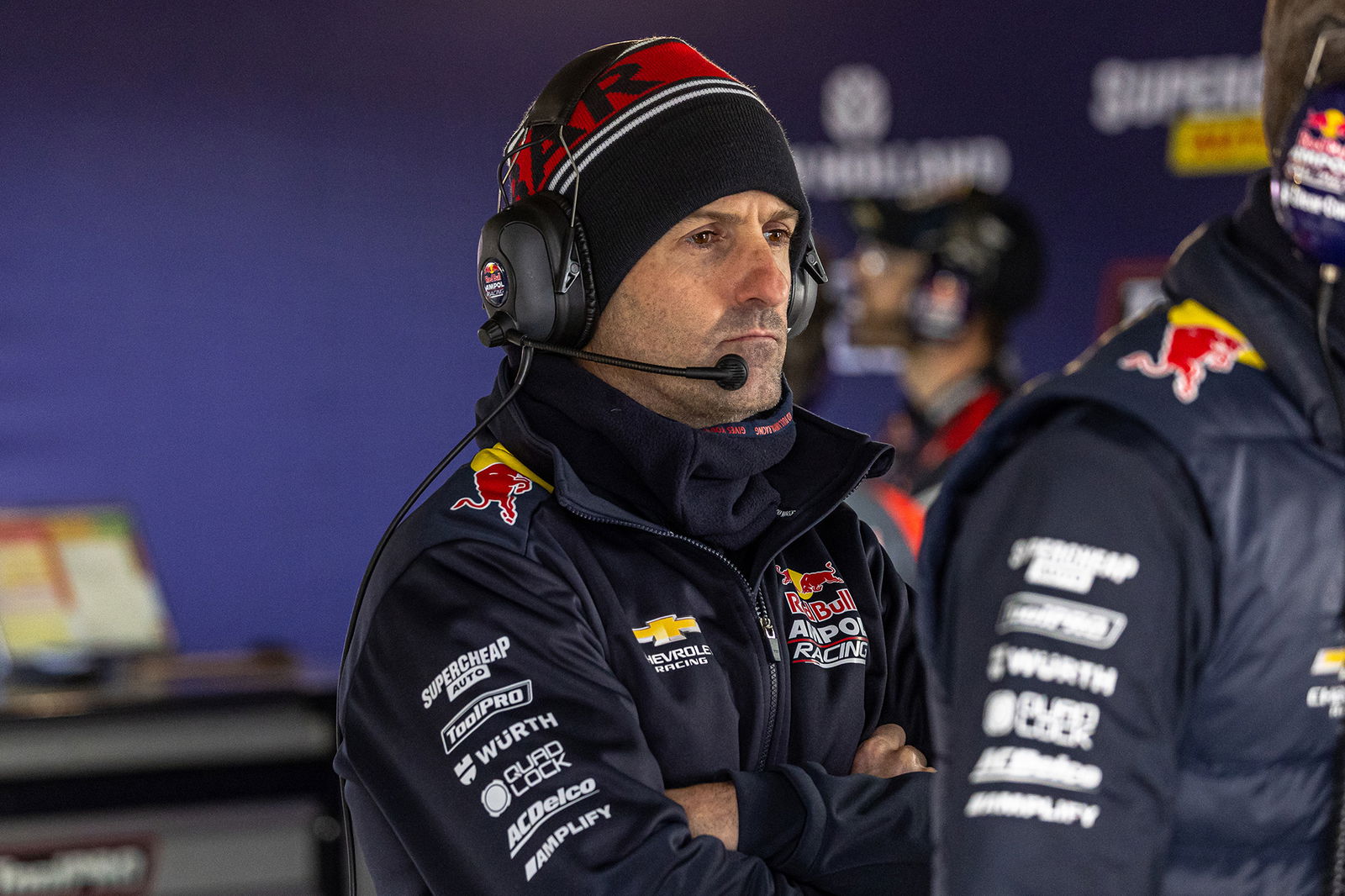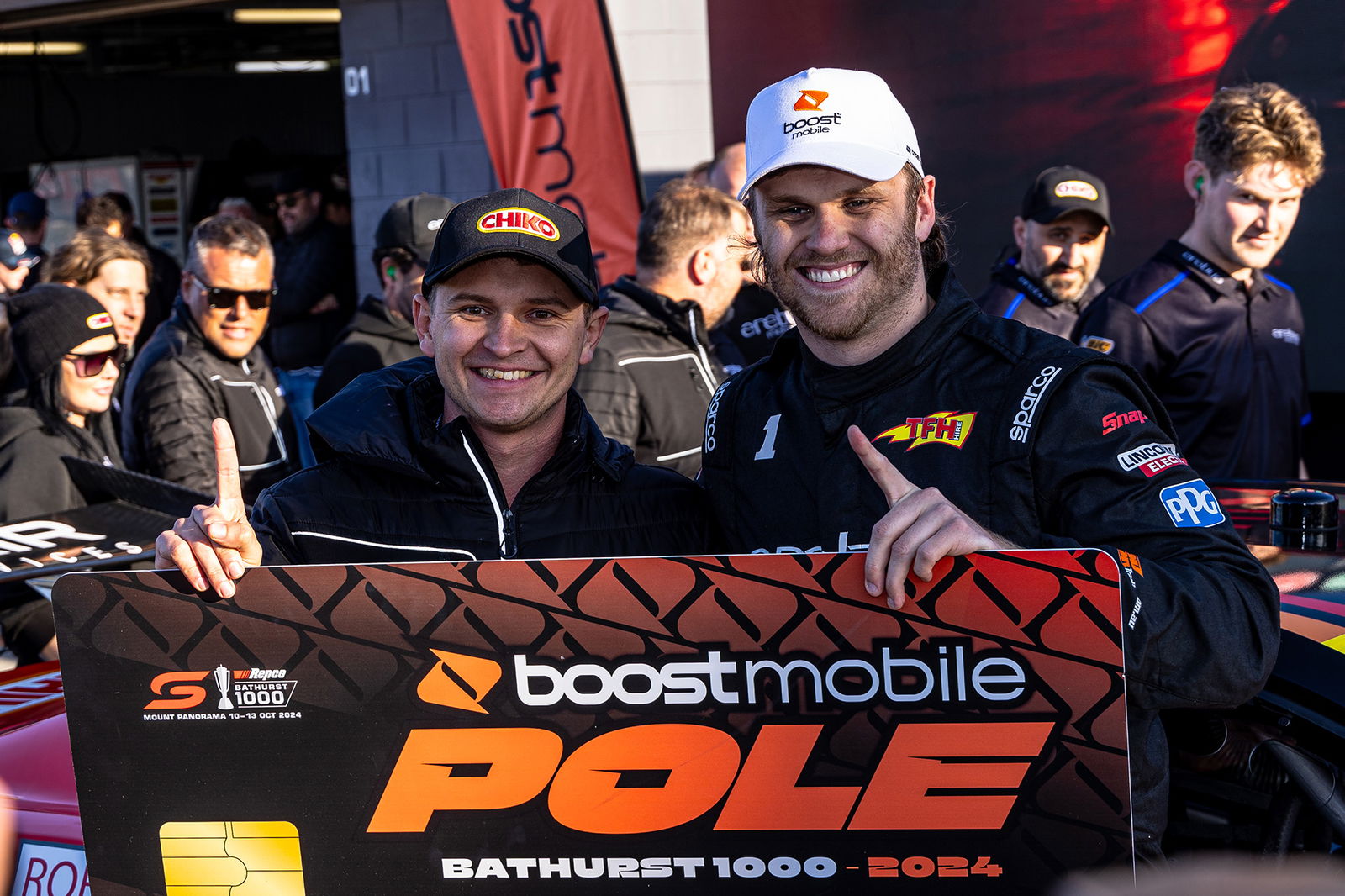

On Saturday, it emerged a change to speed up the speed under FCY conditions from 80 km/h to 120 km/h was ultimately not implemented despite the issues at the Sandown 500
One key aspect is the removal of a minimum two-lap-long FCY period to allow drivers to pit and avoid double stacking. That won’t be the case at this year’s Bathurst 1000.
The biggest race of the year could yet be heavily impacted by what is clearly still a work in progress, but the seven-time champion is happy with the what-ifs.
“The fact that we’ve got full course yellow is fantastic,” said the seven-time champion.
“Like anything new, you never nail it perfect the first time. It’s always got to evolve. If you throw it out after the first attempt, we’d probably be still hunting with boomerangs.
“You’ve got to have a crack at it. We did at Sandown, it’s now evolved, and it’s going to get better and better over time.
“Most categories around the world run full course yellow. So it’s a good thing that we’ve adopted it.”

The proposal to move to 120 km/h came off the back of the Sandown 500 and feedback that the FCY process was too slow.
Removing the minimum two-lap period duration will at least mean short clean-up jobs are just that – short.
“The full course yellow period is because there’s an incident on the track, so you’ve got to slow down so that crews can get out there to start the recovery,” Whincup explained.
“So in some regard, the slower the better. But if it’s too slow, then it takes too long to get around.
“There’s a half a dozen corners here that the minimum racing speed is under 120 km/h so I think 80 km/h is more sensible.
“But the whole purpose of Full Course Yellow is to clear up, like not go to a safety car if there’s an opportunity where there’s something sitting on the track and we can gather it all up, all go down 80 km/h quickly, get that bit of debris off the circuit and go again, that’s what it’s all about.
“So I think we’re getting a little bit tied up into the whole full course yellow, into safety car, and what all that means.”
More Bathurst 1000 news
👉 Brodie Kostecki scores Bathurst 1000 pole position
👉 2024 Bathurst 1000 starting grid
👉 Supercars co-drivers delivered warning for FCY near-miss
👉 DJR’s ‘generous’ offer to Tickford amid Bathurst trouble
One major change between the Sandown 500 and the Bathurst 1000 is the extension of the FCY warning from 15 seconds to 25 seconds.
That’s in part due to the possibility of signal loss over the top of The Mountain.
Even a test run on Saturday morning wasn’t without issue. Fabian Coulthard and Dale Wood were given warnings for not slowing down under FCY conditions during Practice 5.
“For me, it was okay,” said Todd Hazelwood.

“Obviously, the biggest thing is that we’re relying on the SIM card system at the moment the way it gets brought into the car.
“With the amount of people and obviously the interference around the circuit, that could be a problem — and hence why they’ve increased the time in the countdown when we have to have those limiters put on. So I think that’s a good thing.
“As Jamie mentioned, I think it’s evolving. It’s not going to be the same system that we saw at Sandown. I think it was painful for everyone. It’s painful for us as drivers teams and for the people watching at home.
“So Supercars and everyone involved internally I think has learned from that and tried to make it better. And as Jamie mentioned, I think it’s got its purpose. I think if we can use it in a way where there’s debris on the circuit, we can get to it quickly and get the cars back racing.
“That’s what we’ve got to use Full Course Yellow for. What we saw at Sandown, I hope we never see again having cars doing multiple laps doing 80 km/h.
“At the end of the day, it’s all about safety. So going faster is not the fix for the issue. There’s still some work to be done… if they can rely on the drivers helping aid that move forward as well, I think that would be a good thing.”
The Bathurst 1000 gets underway at 11:30am AEDT.




















Discussion about this post